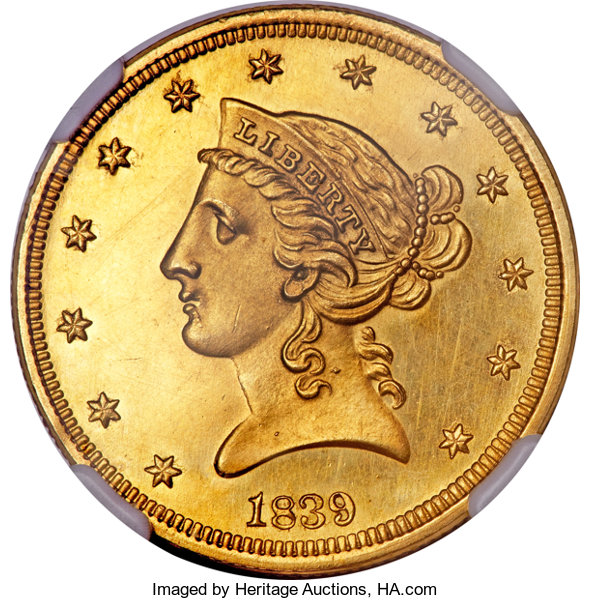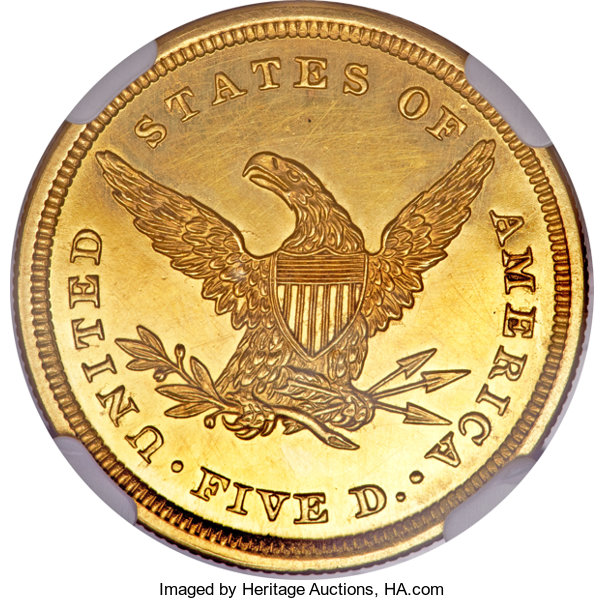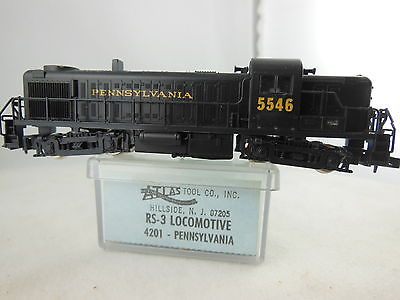Notes: "Semi-Unique" is an oxymoron that B. Max Mehl and other 19th and 20th century coin dealers enjoyed using, and the 1839 proof half eagle fits the definition perfectly, with only two pieces known to exist. NGC has certified a single piece that was formerly PCGS graded PR61.
1. PR61 NGC. William H. Woodin; Waldo Newcomer; Col. E.H.R. Green; Burdette G. Johnson; King Farouk (Sotheby's, 2/1954), lot 249; Thomas Melish Sale (A. Kosoff, 4/1956), lot 1983; Paul and Art Kagin; Hollinbeck Coin Company (11/1959). The present specimen. This coin has been off the market for 50 years. In his Encyclopedia of United States and Colonial Proof Coins, Walter Breen speculated that the Farouk coin and the Melish coin, that he assigned separate entries. Today, we can confirm that they are the same coin.
2. PR61 PCGS. Purchased in Europe in January 1982 by Marc Emory for New England Rare Coin Galleries, as part of a three-piece 1839 gold proof set. The set was apparently the property of a European museum that was divesting its holdings of foreign (to them) coins. Later, offered provisionally in Bowers and Merena (5/1993), lots 2537-2539, but sold as a set in lot 2540.
1. PR61 NGC. William H. Woodin; Waldo Newcomer; Col. E.H.R. Green; Burdette G. Johnson; King Farouk (Sotheby's, 2/1954), lot 249; Thomas Melish Sale (A. Kosoff, 4/1956), lot 1983; Paul and Art Kagin; Hollinbeck Coin Company (11/1959). The present specimen. This coin has been off the market for 50 years. In his Encyclopedia of United States and Colonial Proof Coins, Walter Breen speculated that the Farouk coin and the Melish coin, that he assigned separate entries. Today, we can confirm that they are the same coin.
2. PR61 PCGS. Purchased in Europe in January 1982 by Marc Emory for New England Rare Coin Galleries, as part of a three-piece 1839 gold proof set. The set was apparently the property of a European museum that was divesting its holdings of foreign (to them) coins. Later, offered provisionally in Bowers and Merena (5/1993), lots 2537-2539, but sold as a set in lot 2540.
Designer: Christian Gobrecht
History: The Liberty (or Coronet) Head design first appeared on the Half Eagle in 1839. It was a popular design and remained in service until 1908. The design for the Liberty Half Eagle was created by Christian Gobrecht, the son of a German born immigrant and a talented engraver. He is also credited with the Liberty Seated design introduced on the silver denominations during the same era. For the gold coins, the head of Liberty appears, facing left. She wears a coronet inscribed LIBERTY with her hair bound in a knot with a beaded ribbon. The date appears below and thirteen stars surround.
The reverse design depicts a bald eagle, grasping an olive branch in one talon and three arrows in the other. The eagle’s wings are spread, and a large shield is placed at the chest. The inscription UNITED STATES OF AMERICA is around and the denomination expressed as FIVE D.
The reverse design depicts a bald eagle, grasping an olive branch in one talon and three arrows in the other. The eagle’s wings are spread, and a large shield is placed at the chest. The inscription UNITED STATES OF AMERICA is around and the denomination expressed as FIVE D.
Item created by: Lethe on 2015-05-31 17:46:30. Last edited by gdm on 2019-10-24 09:04:25
If you see errors or missing data in this entry, please feel free to log in and edit it. Anyone with a Gmail account can log in instantly.
If you see errors or missing data in this entry, please feel free to log in and edit it. Anyone with a Gmail account can log in instantly.








